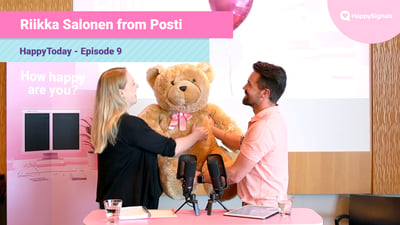Employee Experience in ITSM
In this episode Pasi & Sami talk about Employee Experience in ITSM and how HappySignals got started.
Related content

2 minute read
03.06.2019
Happiest Enterprise 2019 - Finnish Postal Company, Riikka Salonen
In this episode Pasi Nikkanen had an interview with Riikka Salonen , Service Support Lead at Posti, the Finnish Postal ...
Read more >
5 minute read
21.09.2020
#XLA - Is Happiness Overrated with Giarte CEO, Marco Gianotten
Happiness - a term that can be imagined as something very fluffy. However, it is also a term that grows increasingly ...
Read more >
